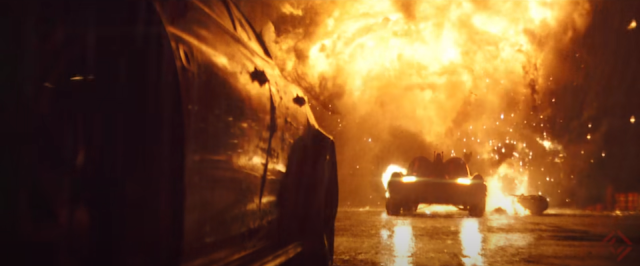.png) |
| Adam West's Bat suit was also a very advanced fabric able to deflect machine gun fire. |
Anyone who has followed my work for a long time will know that Batman is my favorite comic book superhero. That's why my character Bat Storm is modelled after Batman and not any other hero. Less known is that Adam West, more than any other live action Batman, is 'my Batman' or at least the Batman of my childhood self.
That's not to say I don't like other versions, I very much do, but Adam's Batman is the one that made me a life long fan - because I've never really read Batman comics. To this day I'll fight you on the best Batmobile being the 66 TV series version (including if you put it against every iteration from the comic books).
So when the YouTube channel and VFX studio, Corridor Crew came up in my suggested videos with their The Batman Trailer, but with Goofy Batman, I was there.
Watch the finished, stand alone trailer below. It's my new, favorite Batman trailer of all time.
As great as it is to see the '66 Batman movie mashed in with the '22 The Batman film complete with a contemporary neon take on the comic book, text sound effects, it's really the chance to see the '66 Batmobile hold up so well in a trailer based on the latest look and style of Batman's world that makes this for me.
 |
| The '66 Batmobile in the trailer is actually a mashup of the '66 (top) and the '22 (chassis and wheels). |
The '66 Batmobile is both of it's time an a timeless classic, much like James Bond's classic 1963 Aston Martin DB5. I've always thought the broad strokes of how the car looks, and it's key features are sound, all it needs is a few tweaks here and there to update its technology. Batman doesn't need an oversized tank to fight crime in a city like Gotham, with streets designed for more regular sized cars.
But I digress. I really wanted to feature this video because the Corridor Crew put together an amazing behind the scenes video (embeded below) of how they made this trailer in just a week including an all new mash up of the musical score.
Particularly of interest is how they used existing 3D models to not only include the '66 Batmobile but also the '66 Batcopter. As I watched the crew certainly make this kind of movie level video compositing well within the reach of independent and hobbyist film makers on a tight budget.
That said the industry standard VFX, node based, compositing software they use, called Nuke, isn't cheap but, if your a solo, indie artist you can get a version of it for a USD$499 annual subscription. Plus there are educational and non-commercial licenses available too (plus you can try Nuke completely free for 30 days).
If that's all a bit out of reach, while it isn't on the same level, the free, open source, node based, compositing tool, Natron, is a good entry point into this kind of work. There's also Adobe After Effects if you happen to be in that ecosystem.
Anyway, watch Corridor Crew's behind the scenes, We put the OLDEST Batman into the NEWEST Batman video below and be inspired.

Comments
Post a Comment
This blog is monitored by a real human. Generic or unrelated spam comments with links to sites of dubious relativity may be DELETED.
I welcome, read, and respond to genuine comments relating to each post. If your comment isn't that save me some time by not posting it.